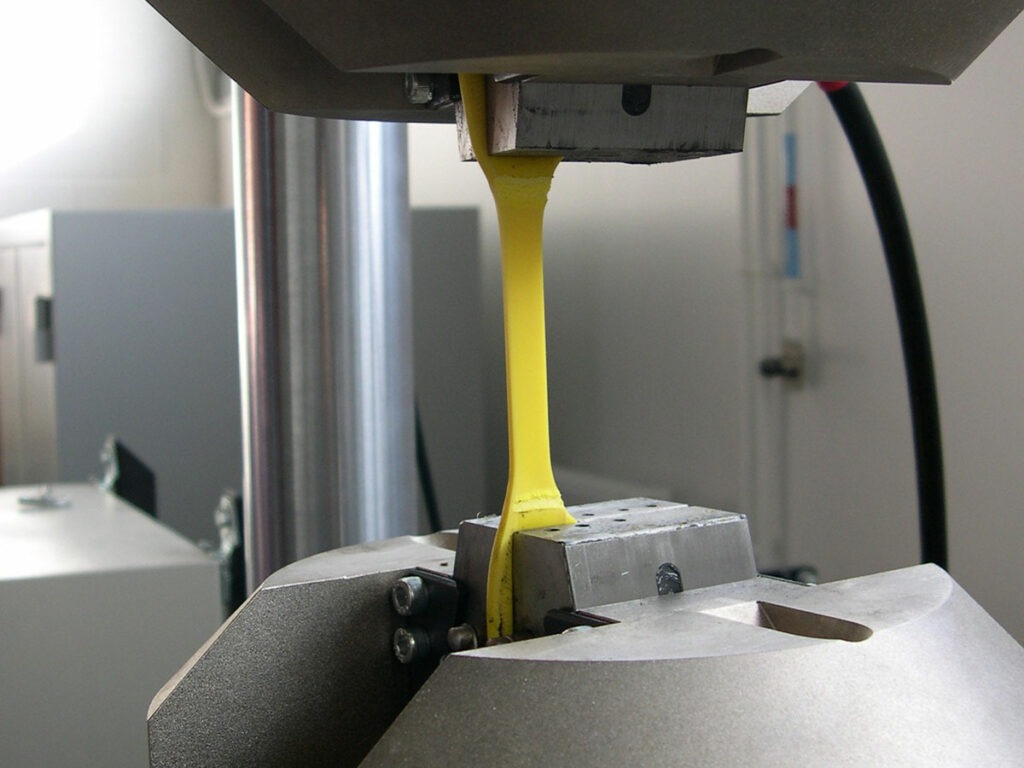Tensile strength is a fundamental measure of a material's ability to withstand stretching or deformation forces without breaking. It is essential in many areas of engineering and manufacturing, as it helps assess the durability and quality of materials under tension. The maximum strength a material can withstand before yielding is calculated and expressed in units of stress, usually megapascals (MPa) in the International System.
1. Understanding Tensile Strength
1.1. Definition and explanation
Tensile strength represents the maximum load a material can withstand per unit area before breaking. This is essential for evaluating materials used in applications where high forces are involved, such as in metal construction, industrial textiles, and polymers.
1.2. Importance of tensile strength in industry
This characteristic is crucial for engineers because it helps determine whether a material is suitable for specific loads. Good tensile strength means that the material is able to withstand forces without breaking, which is essential for structural applications where safety is a priority.
2. Calculation of tensile strength
2.1. Basic formula
Tensile strength is calculated using the following formula:
Tensile strength (Rm) = Maximum force (Fm) / Initial cross-sectional area (S0)
It is expressed in megapascals (MPa) or newtons per square millimeter (N/mm²). For example, if a force of 500 N is applied to a section of 5 mm², the tensile strength will be 100 MPa.
2.2. Stress-strain diagram
In a tensile test, the material's behavior is represented by a stress-strain diagram, allowing different thresholds such as the yield point and the breaking point to be identified. This diagram helps to understand how the material deforms under stress and where the maximum strength lies.

3. Tensile strength testing techniques
3.1. Standard tensile test
Tensile testing involves stretching a specimen to break and measuring the applied force and the elongation of the material. This test is commonly performed on tensile testing machines that monitor force and deformation. It allows for accurate data collection on the yield strength, ultimate strength, and fracture of the material.
3.2. Other techniques used
- Tensometry : A technique that uses strain gauges to measure material deformation in real time.
- Ultrasonic testing : Used for certain fragile or delicate materials that can break easily.
4. Analysis of common materials and their tensile strength
Some materials have particularly high or low tensile strength depending on their composition and use. Here are some examples:
| Material | Tensile strength (MPa) |
| Mild steel | 400-550 |
| Aluminum | 95-110 |
| Titanium | 900 |
| Nylon-6 | 45-90 |
| Carbon fiber | Up to 7000 |
This diversity allows engineers to choose materials based on their specific needs, such as lightness, flexibility or strength.
Are you looking for an analysis?

5. Influence of environmental factors
Tensile strength may vary depending on temperature, humidity, and other external factors. For example:
- High temperature : Can weaken some metals and polymers, reducing their strength.
- Humid conditions : Can affect polymers or composite materials by making them more brittle.
6. Importance of ISO standards for tensile strength testing
Tensile strength tests must be performed according to strict standards such as ISO 6892 (for metals) and ISO 527 (for plastics). These standards ensure reliable results and ensure that materials meet safety criteria in various industrial applications.
7. Applications of tensile strength in industry
7.1. Automotive industry
In automotive, tensile strength is crucial for parts subjected to constant forces, such as frames and chassis, which must support loads without yielding.
7.2. Construction industry
Construction materials, particularly structural steels, are evaluated for their ability to withstand significant loads without breaking, ensuring the stability of buildings and infrastructure.
8. Laboratory analyses and tensile strength control
8.1. Analysis procedures
In laboratories, several analysis methods are used to check the tensile strength of materials:
- Universal Tensile Testing Machines : Equipped with force sensors to accurately measure tensile forces.
- Thermomechanical analysis (TMA) : Allows the stability of materials to be checked under different temperatures.
- Spectroscopy : Analyzes the internal structure of materials to assess their resistance based on the constituent elements.
8.2. Importance of standards and certifications
Analyses must comply with standards such as ISO 17025 to ensure reliable results. COFRAC-accredited laboratories ensure regulatory-compliant testing, ensuring optimal levels of quality and safety.
Conclusion
Tensile strength is a key indicator for determining the durability and safety of materials in many industrial applications. Through laboratory analysis and quality standards, engineers can ensure that materials meet the specific requirements of different sectors. In this way, tensile strength continues to play a key role in the development and safety of modern technologies.




